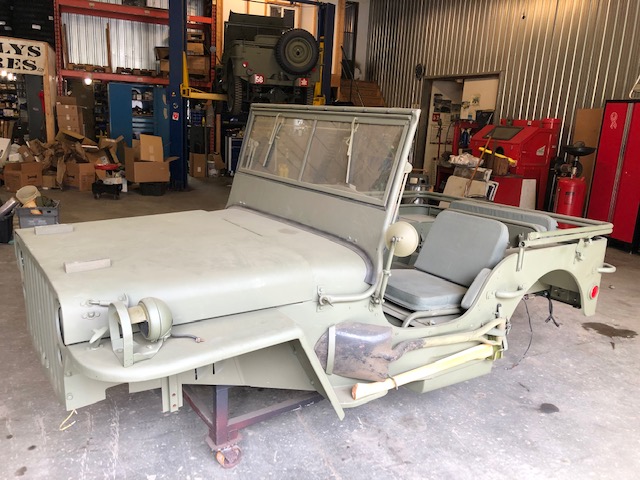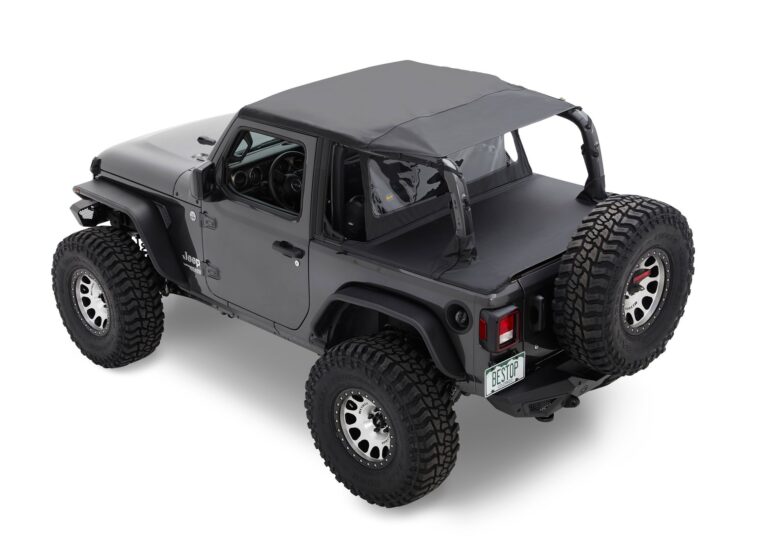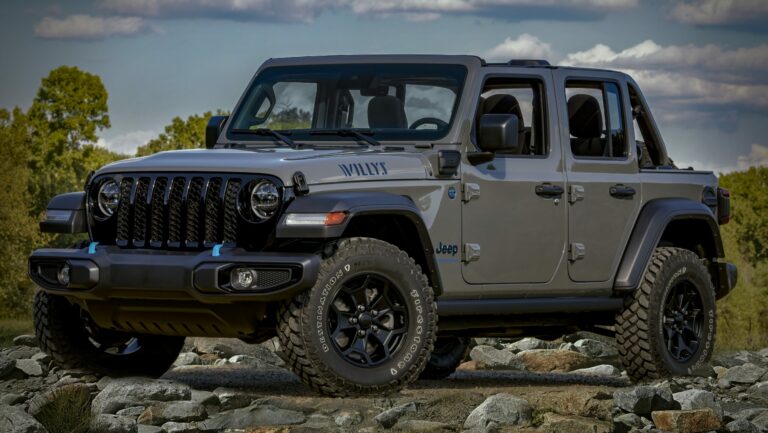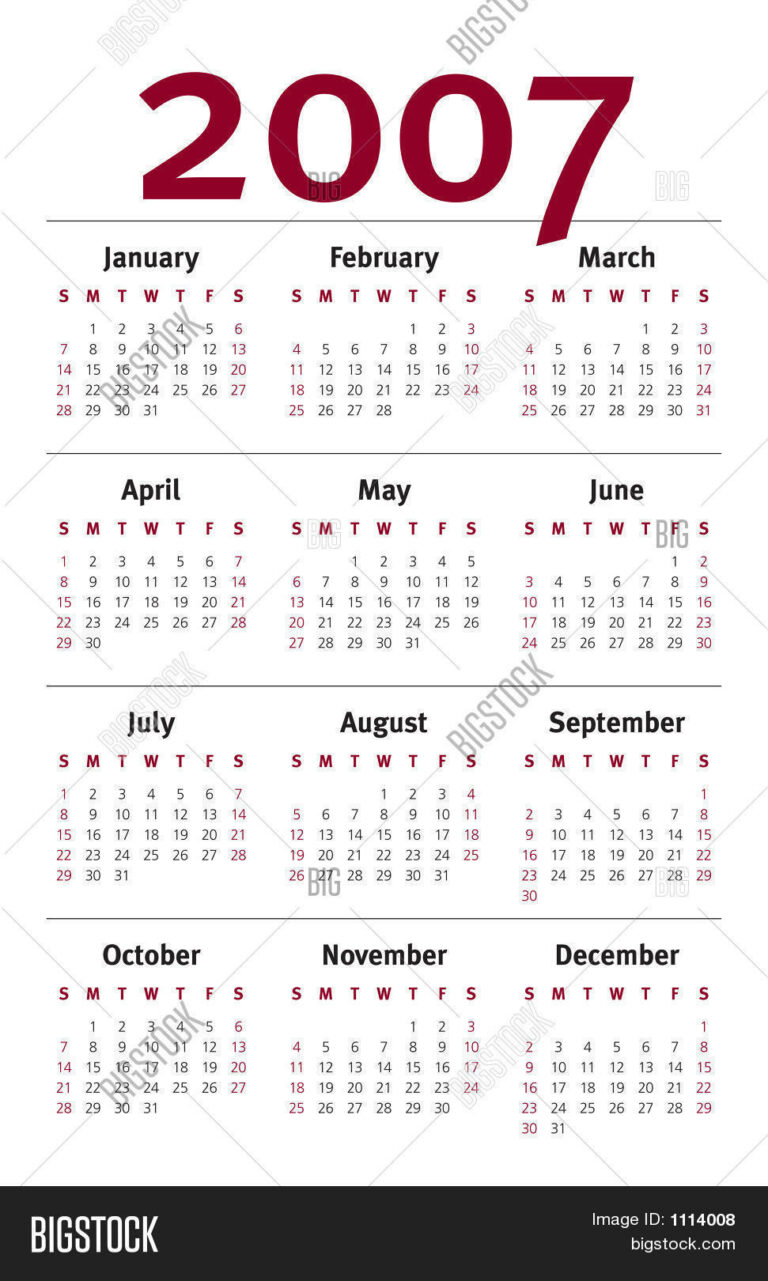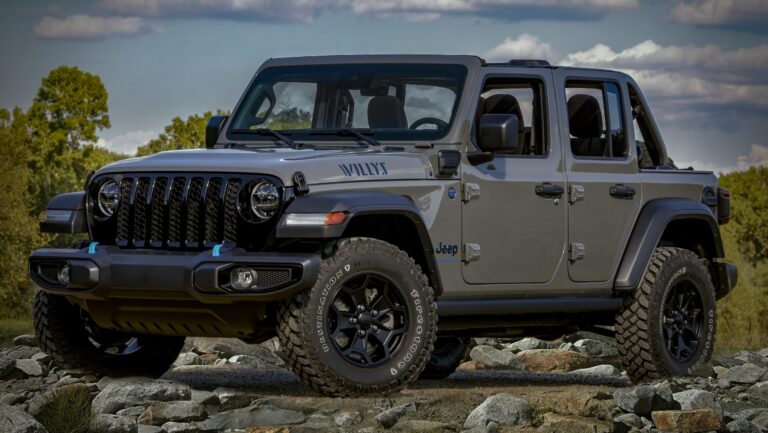Willys Jeep Body For Sale: Your Ultimate Guide to Restoration and Customization
Willys Jeep Body For Sale: Your Ultimate Guide to Restoration and Customization jeeps.truckstrend.com
The iconic Willys Jeep, a symbol of American resilience and ingenuity, has captivated enthusiasts for generations. From its humble beginnings as a military workhorse (MB/GPW) to its civilian adaptation (CJ series), the Willys Jeep represents a unique blend of rugged utility and timeless appeal. For many, owning a piece of this history is a dream, but finding a complete, rust-free, and affordable original can be a daunting task. This is where the concept of a "Willys Jeep Body For Sale" becomes incredibly relevant, offering a gateway to restoration, customization, and the preservation of a beloved automotive legend.
A Willys Jeep body, often referred to as the "tub," forms the core structure of the vehicle – the passenger compartment, cargo area, and mounting points for key components like the fenders, hood, and grille. For those embarking on a restoration project, building a custom off-road rig, or simply replacing a severely damaged original, acquiring a standalone body is often the most practical and cost-effective starting point. It represents a blank canvas, allowing builders to meticulously recreate historical accuracy or unleash their creativity to craft a unique, personalized vehicle. This comprehensive guide will delve into every aspect of finding, evaluating, and utilizing a Willys Jeep body for sale, ensuring your project is a success.
Willys Jeep Body For Sale: Your Ultimate Guide to Restoration and Customization
Why Buy a Willys Jeep Body? The Appeal of a Blank Canvas
The decision to purchase just a body, rather than a complete vehicle, stems from several compelling reasons, offering distinct advantages for different types of builders.
1. Restoration Projects: For purists, a body in decent condition provides an ideal foundation for a faithful restoration. Original Willys Jeeps often suffer from extensive rust, collision damage, or decades of neglect. Stripping down a complete vehicle to its frame and rebuilding the body is a monumental task. Starting with a solid, albeit bare, body can significantly streamline the process, allowing restorers to focus on authenticity, correct parts, and a pristine finish. It’s often more economical to replace a severely compromised body than to spend countless hours and dollars on extensive rust repair and panel fabrication.
2. Customization and Hot Rodding: Beyond restoration, a Willys Jeep body offers unparalleled freedom for custom builds. Imagine a classic Willys tub dropped onto a modern chassis with a powerful V8 engine, or a highly modified off-road machine designed for extreme trails. A bare body allows builders to integrate custom roll cages, modified firewalls, unique seating arrangements, and bespoke body modifications without having to contend with existing vehicle components. It’s the ultimate starting point for creating a one-of-a-kind vehicle that blends vintage aesthetics with modern performance or specialized utility.
3. Cost-Effectiveness and Availability: While a pristine, complete Willys Jeep can command a high price, a standalone body, especially one requiring some work, can be significantly more affordable. This opens up the possibility of ownership to a wider range of enthusiasts. Furthermore, bodies are often easier to find than complete, running vehicles, particularly if you’re willing to consider reproduction options or those needing substantial repair.
4. Learning and DIY Experience: For the mechanically inclined and those eager to learn, a body-off restoration or custom build is an incredibly rewarding experience. It provides hands-on exposure to bodywork, welding, fabrication, and assembly, building valuable skills and a deep understanding of automotive construction.
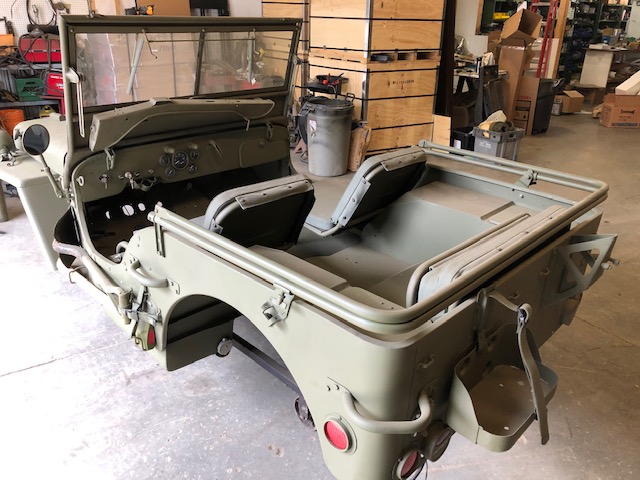
Types of Willys Jeep Bodies Available
When searching for a Willys Jeep body, you’ll generally encounter two main categories, each with its own set of pros and cons:
1. Original/Used Willys Jeep Bodies:
These are genuine bodies salvaged from existing Jeeps, ranging from complete vehicles to parts cars.
- Pros: Authenticity, original patina (if desired), potentially lower initial cost, retains historical value. For purists, an original body ensures correct stampings, weld points, and material thickness.
- Cons: Rust is the primary concern. Original bodies are often riddled with rust in common areas like the floorboards, hat channels, cowl, and lower body panels. They may also have dents, previous poor repairs, or hidden structural damage. Thorough inspection is crucial.
- Where to Find: Salvage yards, private sellers (online marketplaces like eBay, Craigslist, Facebook Marketplace), specialized Jeep forums, parts dealers, and sometimes through dedicated classic car or military vehicle restorers.

2. Reproduction/New Willys Jeep Bodies:
These are newly manufactured bodies, typically made of steel, designed to replicate the original Willys tubs.
- Pros: Rust-free and straight panels. This is the biggest advantage, saving immense time and money on rust repair. They often come pre-primed, ready for final prep and paint. Consistency in quality and fitment (though minor adjustments can still be necessary).
- Cons: Generally more expensive than used bodies. Some purists might argue they lack the "soul" or original character of a vintage body. Depending on the manufacturer, very subtle differences in stamping or panel lines might exist compared to an original.
- Manufacturers: Prominent names in reproduction Willys bodies include Omix-ADA (through their various brands), MD Juan (known for their excellent steel reproductions, often manufactured in the Philippines), and other smaller specialized fabricators.
- Materials: While most reproduction bodies are steel, you might occasionally find fiberglass reproductions. Fiberglass bodies are lighter and completely rust-proof, but they lack the original steel feel and sound, and are generally less desired for authentic restorations.
Specific Willys Models for Body Swaps:
The most commonly sought-after Willys Jeep bodies for sale belong to these models:
- Willys MB / Ford GPW (WWII Jeeps): Highly sought after for military vehicle restorations. These often command a premium.
- Willys CJ-2A ("AgriJeep"): The first civilian Jeep, popular for its classic look and simplicity.
- Willys CJ-3A: Similar to the CJ-2A, with minor improvements.
- Willys CJ-3B ("Flat Fender"): Distinctive high-hood design to accommodate the F-head engine.
- Willys CJ-5: The longest-running CJ model, though later CJ-5 bodies are significantly different from the flat-fender era.
Key Considerations Before Purchasing
Before you commit to a purchase, a thorough evaluation and understanding of your needs are paramount.
1. Condition (for Used Bodies): This is the most critical factor.
- Rust: Distinguish between surface rust (cosmetic) and structural rust (perforations, weak spots in floor, hat channels, frame mounts). Pay close attention to areas where water collects: floorboards, cowl, under the battery tray, and the lower rear of the body.
- Dents and Damage: Minor dents are fixable, but major collision damage can warp the body and be difficult to correct.
- Previous Repairs: Look for shoddy patch jobs, excessive body filler, or improper welding.
- Completeness: Is it just the bare tub? Or does it include the fenders, hood, grille, tailgate, and windshield frame? More complete sets will cost more but save you the hassle of sourcing individual components.
- Originality: For purists, check for original body tags, serial numbers, and correct stampings.
2. Material (Steel vs. Fiberglass):
- Steel: Authentic, durable, repairable, but susceptible to rust.
- Fiberglass: Rust-proof, lighter, but can crack on impact and might not feel "right" for some. Consider your project’s goals.
3. Compatibility with Your Frame/Chassis: While many Willys bodies share similar dimensions, ensure the body you’re considering will fit your existing frame with minimal modification. For example, fitting an MB body onto a CJ-5 frame will require significant fabrication. Measure twice, buy once.
4. Shipping and Logistics: Willys Jeep bodies are large and relatively heavy. Factor in freight costs, which can be substantial depending on the distance. Local pickup is always ideal if possible. Ensure the seller can properly package and secure the body for transport.
5. Budget Beyond the Body: Remember that the cost of the body is just the beginning. You’ll need to factor in:
- Repair costs: Welding, patching, body filler, sandblasting (for used bodies).
- Prep and Paint: Primer, paint, clear coat.
- Hardware: Bolts, fasteners, rubber seals, body mounts.
- Accessories: Latches, hinges, windshield, seats, dash components.
- Labor: If you’re not doing the work yourself.
6. Legal Aspects: If your original vehicle’s VIN is on a damaged body part, or if you’re building a new vehicle from scratch, understand your local DMV’s regulations regarding VIN assignment and titling. In most cases, the VIN is on the frame, not the body, but it’s good to be aware.
The Buying Process: A Step-by-Step Guide
Navigating the market for a Willys Jeep body requires diligence and a methodical approach.
1. Research and Define Your Needs:
- Model Specifics: Know exactly which Willys model body you need (MB, CJ-2A, CJ-3B, etc.).
- Condition vs. Budget: Decide if you want a project body (cheaper, more work) or a ready-to-prep reproduction (more expensive, less work).
- Completeness: Do you need just the tub, or a full body kit (tub, fenders, hood, grille)?
2. Locate Sellers:
- Online Marketplaces: eBay, Craigslist, Facebook Marketplace, dedicated Jeep enthusiast groups on Facebook.
- Specialized Dealers: Companies like Omix-ADA, MD Juan, and other classic Jeep parts suppliers.
- Forums & Clubs: Join online Willys Jeep forums (e.g., G503.com for military Jeeps, EarlyCJ5.com, WillysOverland.com) and local 4×4 clubs. These communities often have "for sale" sections or members who can point you in the right direction.
- Salvage Yards/Auto Recyclers: Call around to yards specializing in older vehicles.
3. Thorough Inspection (Especially for Used Bodies):
- Photos/Videos: Request numerous high-resolution photos from all angles, including close-ups of common rust areas (floor, hat channels, cowl, wheel wells, rear panel). Ask for videos if possible.
- In-Person Inspection (Ideal): If feasible, inspect the body yourself. Bring a flashlight, a magnet (to detect excessive body filler), and a small hammer (to gently tap for solid metal vs. rust).
- Ask Detailed Questions:
- "Where did the body come from?"
- "What’s its history?"
- "Has it had any previous repairs? If so, what kind?"
- "Are there any original tags or numbers present?"
- "Is there any hidden damage I should be aware of?"
4. Negotiate Price: Be prepared to haggle, especially for used bodies. Research comparable sales to understand fair market value. For new reproduction bodies, prices are usually fixed, but you might find deals during sales events or from different distributors.
5. Arrange Shipping or Pickup:
- Pickup: If you’re collecting it yourself, ensure you have appropriate transport (trailer, flatbed truck) and equipment to load/unload safely.
- Freight Shipping: Obtain quotes from several freight companies. Ensure the seller can properly crate or secure the body on a pallet. Insure the shipment.
6. Secure Payment: Use secure payment methods. For large transactions, consider escrow services or bank transfers after confirming the item’s condition. Avoid cash unless picking up in person and fully satisfied.
Challenges and Solutions
Even with careful planning, challenges can arise. Being prepared helps.
- Extensive Hidden Rust (Used Bodies):
- Solution: Budget for professional media blasting (sandblasting, soda blasting) to reveal all rust. This is a crucial step for any serious restoration. Be prepared to cut out and weld in new patch panels or even entire floor sections. Reproduction patch panels are widely available.
- Fitment Issues (Reproduction Bodies):
- Solution: While generally good, reproduction bodies might require minor adjustments. This could involve re-drilling bolt holes, slight trimming, or shimming to achieve a perfect fit with your frame and other components. This is normal and expected.
- Cost Overruns:
- Solution: Create a detailed budget at the outset, and add a 10-20% contingency fund for unexpected expenses. Track all expenditures meticulously.
- Sourcing Missing Parts:
- Solution: Many specialized vendors cater to Willys Jeep parts (e.g., Kaiser Willys Auto Parts, Walck’s 4WD). Online forums and swap meets are also excellent resources for rare or used parts.
- Lack of Specific Tools or Skills:
- Solution: Identify skill gaps early. Invest in necessary tools (welder, grinder, bodywork tools) or plan to outsource specific tasks (e.g., professional welding, paint shop). Consider taking basic welding or bodywork courses.
Tips for a Successful Willys Jeep Body Project
- Plan Meticulously: Before buying anything, outline your entire project. What’s the end goal? What parts do you need? What’s your budget?
- Start with a Solid Foundation: Whether new or used, the better the starting condition of the body, the smoother your project will be. Don’t underestimate the time and cost of rust repair.
- Document Everything: Take photos before, during, and after each step. This helps with reassembly, troubleshooting, and provides a valuable record of your work.
- Join Online Communities: Willys Jeep forums and social media groups are invaluable resources for advice, troubleshooting, and finding parts. Learn from others’ experiences.
- Patience is Key: Bodywork and restoration are time-consuming. Don’t rush. Quality work takes time.
- Safety First: Always wear appropriate personal protective equipment (PPE) when grinding, welding, sanding, or painting.
- Test Fit Components: Before final paint, test fit the fenders, hood, grille, doors, and windshield frame to ensure proper alignment and gaps.
Willys Jeep Body For Sale Price Guide
This table provides estimated price ranges for different types and conditions of Willys Jeep bodies. Prices can fluctuate significantly based on rarity, specific model, seller, location, market demand, and completeness.
| Body Type/Condition | Completeness | Estimated Price Range (USD) | Notes |
|---|---|---|---|
| Used Original (Poor/Fair) | Tub only | $500 – $1,500 | Extensive rust, dents, likely structural repair needed. Best for experienced restorers with welding skills. |
| Used Original (Good) | Tub only | $1,500 – $3,000 | Minor surface rust, some dents, solid structure. Requires bodywork and paint. Good candidate for DIY. |
| Used Original (Excellent) | Tub, fenders, hood, grille | $3,000 – $6,000+ | Minimal rust, straight panels, rare find. May still need paint. Often from dry climates. |
| Reproduction (Bare Steel) | Tub only | $2,500 – $4,000 | New, rust-free, requires prep and paint. Excellent starting point for custom or restoration. |
| Reproduction (Bare Steel) | Tub, fenders, hood, grille | $4,000 – $7,000+ | New, complete set of major body panels, requires prep and paint. Most popular option for full builds. |
| Reproduction (Assembled/Primed) | Tub, fenders, hood, grille | $7,000 – $10,000+ | Higher quality, often assembled by manufacturer, sometimes primed. Ready for final prep and paint, reducing labor. |
| Fiberglass Reproduction | Tub, fenders, hood, grille | $3,000 – $6,000 | Lighter, rust-proof, but less authentic feel for some purists. Good for off-road or budget builds. |
Disclaimer: These are approximate market values and can vary. Prices are subject to change based on economic conditions, supply, and demand. Always verify current pricing with sellers.
Frequently Asked Questions (FAQ)
Q1: Can I put a Willys CJ body on any Willys frame?
A1: Not necessarily. While many Willys frames share similarities, there are distinct differences between models (e.g., MB/GPW vs. CJ-2A vs. CJ-5). Frame lengths, body mount locations, and firewall configurations can vary. Always verify compatibility by measuring your frame and comparing it to the body’s dimensions or consulting specific model guides.
Q2: Are reproduction bodies as good as original?
A2: For most purposes, reproduction bodies are excellent. They are rust-free, straight, and significantly reduce restoration time and cost. For a purist seeking 100% historical accuracy down to every stamping mark, an original body (even one requiring extensive repair) might be preferred. However, for a reliable, good-looking, and safe vehicle, reproductions are often superior.
Q3: How much does it cost to restore a Willys Jeep body?
A3: This varies wildly. For a used body needing extensive rust repair and bodywork, costs could range from $2,000-$10,000+ just for the bodywork and paint, depending on whether you DIY or hire professionals. Starting with a new reproduction body can cut down on repair costs, but the initial purchase price is higher. Factor in tools, materials, and potentially professional labor.
Q4: Where is the VIN (Vehicle Identification Number) on a Willys Jeep?
A4: On most Willys Jeeps, the primary VIN or serial number is stamped directly onto the frame, typically on the passenger side frame rail near the front spring hanger or engine mount. Some models also have a data plate on the dashboard or firewall. The body itself usually does not carry the official VIN, though some original bodies might have a body number or manufacturing stamp.
Q5: Do I need a title for a body I purchase?
A5: Generally, no. A vehicle title is associated with the VIN, which is typically on the frame. If you’re purchasing just a body, it’s considered a part, not a complete vehicle. However, if you are building a "new" vehicle from scratch using a reproduction body, you will need to follow your state’s regulations for obtaining a new VIN and title (e.g., as a "assembled" or "replica" vehicle).
Q6: What’s the main difference between an MB/GPW (WWII) and a CJ (Civilian Jeep) body?
A6: While visually similar, there are numerous differences. MB/GPW bodies have distinct military features: a shovel and axe mount on the driver’s side, blackout light mounts, specific grab handles, unique tailgate (if present), and often more robust construction for military use. CJ bodies (CJ-2A, 3A, 3B, etc.) were adapted for civilian use, often with different taillight configurations, civilian dashes, and sometimes slightly different dimensions or mounting points for civilian accessories.
Q7: How much does shipping cost for a Willys Jeep body?
A7: Shipping costs depend heavily on distance, carrier, and whether the body is crated or on a pallet. Expect costs to range from $300-$1,500+ within the continental US, and significantly more for international shipping. Always get a direct quote from a freight company, and ensure the seller is capable of preparing the body for safe transport.
Conclusion
Acquiring a Willys Jeep body for sale is a significant step towards bringing a piece of automotive history back to life or creating a custom vehicle that truly stands out. Whether you choose a battle-scarred original for a meticulous restoration or a pristine reproduction for a straightforward build, the journey promises to be rewarding. By understanding the types of bodies available, carefully considering all factors, and following a methodical buying process, you can navigate the market with confidence. The Willys Jeep is more than just a vehicle; it’s a legacy, and with the right body, your project can contribute to keeping that legacy alive for generations to come. Embrace the challenge, enjoy the process, and soon you’ll be behind the wheel of your very own iconic Willys.

